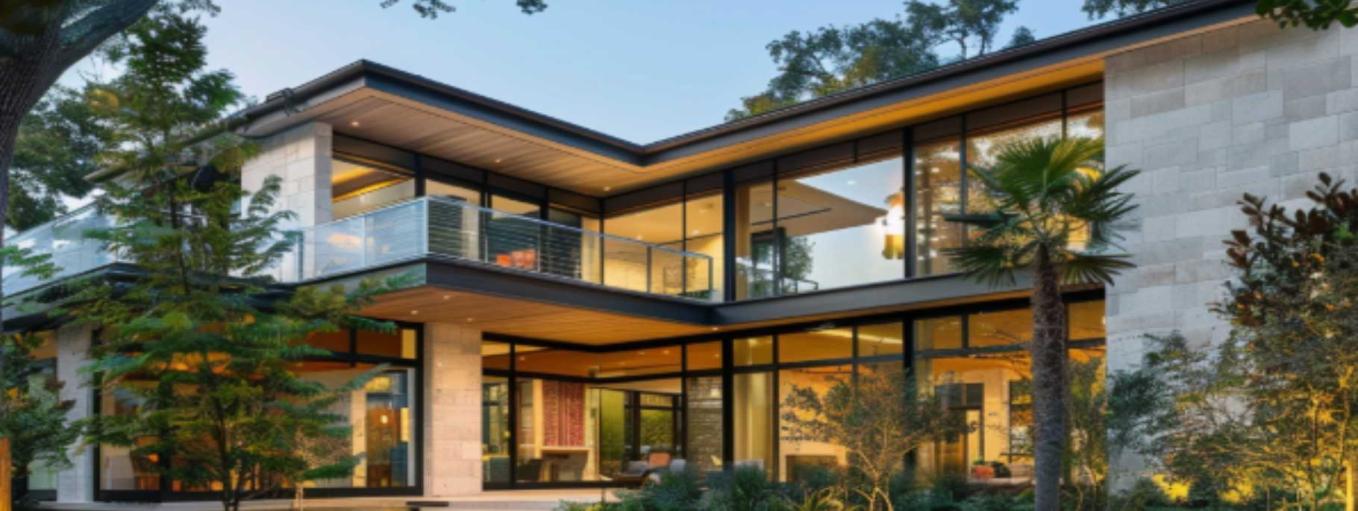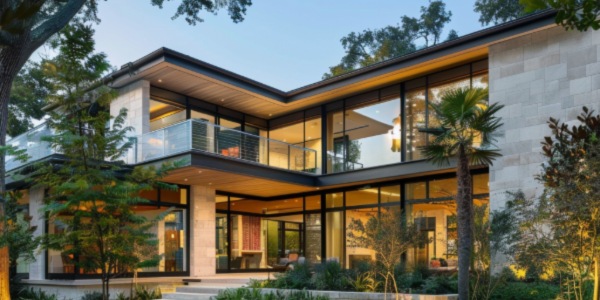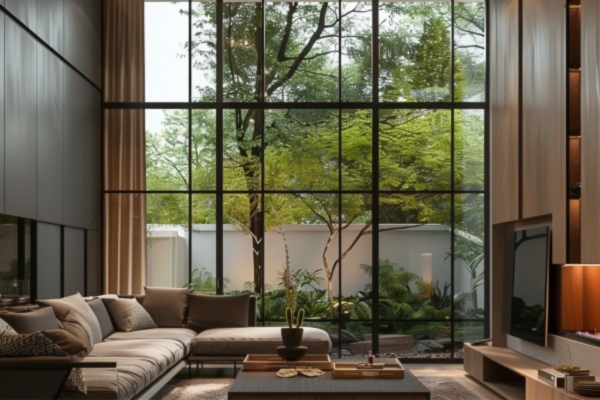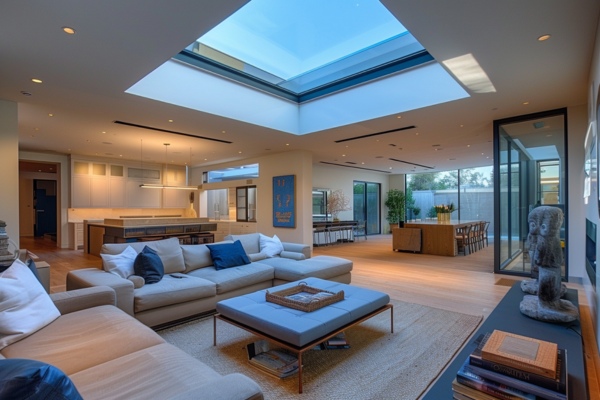


Different buildings have unique requirements when it comes to aesthetics, performance, and functional operations. One building material that has stood the test of time in shaping building design and the environment is Glass.
From humble beginnings when glass was incorporated mainly for windows to allow light and warmth into a space, to today, glass has evolved with advanced manufacturing techniques, becoming a fundamental element of interior and exterior design.
Of the total electricity consumed in the building sector, about 75% is attributed to the residential segment. (Source: Bureau of Energy Efficiency). It is hence paramount to look at different measures to reduce the energy consumption in the residential segment.
Glass plays a pivotal role in residential architecture, serving as a key element that opens homes to their surroundings, invites natural light, and fosters the seamless interconnectivity of spaces.
Ordinary glass can result in excessive heat gain and dependency on mechanical cooling, glare and exposure to harmful UV rays, impacting the well-being of occupants as well as the longevity of furniture and furnishings.

The choice of glass, therefore, becomes a crucial factor in determining a building's overall performance. By opting for energy-efficient glass for residential buildings, these challenges can be effectively mitigated, enhancing comfort while promoting a sustainable living environment.
Let’s learn about the role of high-performance glass in transforming modern homes while creating beautiful and sustainable spaces.
High-performance glass is a sustainable glass engineered with specified treatments and coatings that optimise the natural light penetration and minimise heat absorption and transmission. This allows for appropriate indoor temperatures to be maintained without sacrificing the ability of the glass to provide an unobstructed view of the outdoors.
Therefore, high-performance glass reduces the need for artificial lighting and the load on cooling and heating devices. Unlike standard annealed glass, high-performance glass consists of advanced coatings that give solar protection in warmer climates or promote heat retention in colder regions, thereby increasing the building's energy efficiency.
Selecting the right type of glass can enhance thermal performance, visual appeal and occupant comfort.
Different types of high-performance glass can cater to the distinct needs of the occupants, including light transmittance, heat transference, and energy performance.

Here are some common types of high-performance glass
Solar control glass is designed to reflect and absorb a significant amount of solar heat, preventing it from entering the building. This type of glass reduces the reliance on artificial cooling systems in hot climates, making it suitable for regions with intense sunlight year-round. Plus, solar control glass provides UV protection, helps reduce glare, and maintains a more comfortable living environment.
Low-E glass has a thin metal oxide coating that restricts radiative heat flow through the facade in different weather conditions and climate zones. This advanced coating reduces heat loss in colder climates and maintains a stable indoor temperature in warmer climates, slashing energy costs and the need for artificial heating and cooling.

The advantages of high-performance glass are copious. From aesthetics, transparency, thermal comfort, the flow of abundant daylight, and views of the outdoors contributing to the well-being of occupants, this range of architectural glass is designed to bring comfort.
When considering glass for residential projects, investing in high-performance glass can boost the long-term value of homes while ensuring sustainable construction.
What is the difference between solar control glass and ordinary glass?
Solar control glass has an advanced pyrolytic coating that reduces the amount of heat and glare entering the building, compared to normal glass. Moreover, solar control glass provides even natural light distribution and comes with different tints, ensuring privacy better than normal glass.
What applications of high-performance glass are used in residential construction?
A. High-performance glass is becoming popular in the residential segment largely for windows and facades and is a great choice for skylights, and French windows as well. It provides homeowners with numerous benefits, including solar control, thermal insulation, UV protection, energy savings, and aesthetic appeal, ensuring a more inviting and sustainable living space.
How does Low-E glass work in modern homes?
A. Low-E glass minimizes direct and indirect heat gain through the facade, keeping interior spaces cosy in cold climates and reducing the heat gain in warmer climates. It also helps eliminate glare. It provides clear views and excellent external visibility all day long. This contributes to increased productivity and improved occupant comfort.
Jahanavi Arora is an architect by profession and a writer by choice, with over 7 years of experience in architecture and design writing. She graduated from Chandigarh and believes that writing and architecture are similar as both are forms of art. From beginning her journey as a freelance architect, Jahanavi gradually transitioned into a full-time writing role. Read More